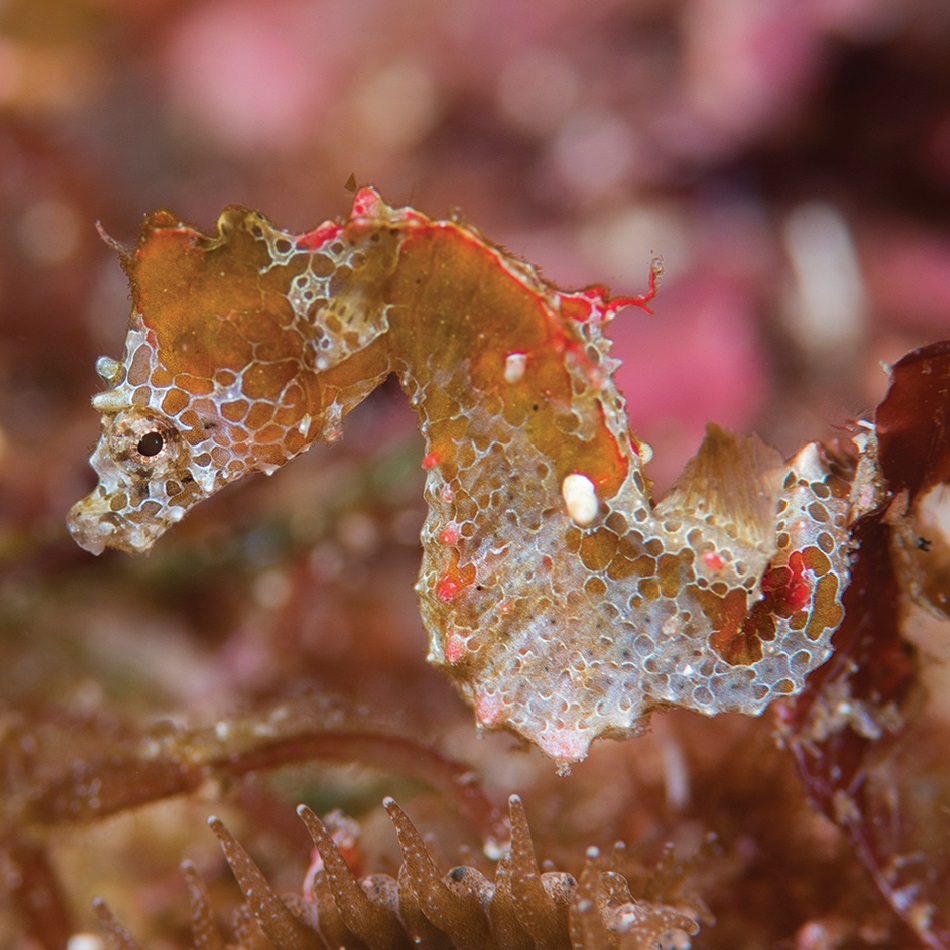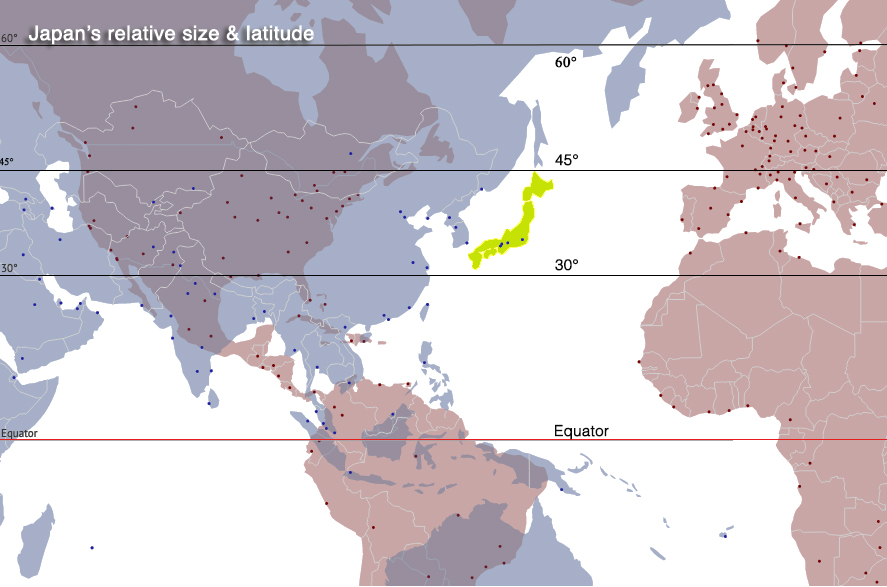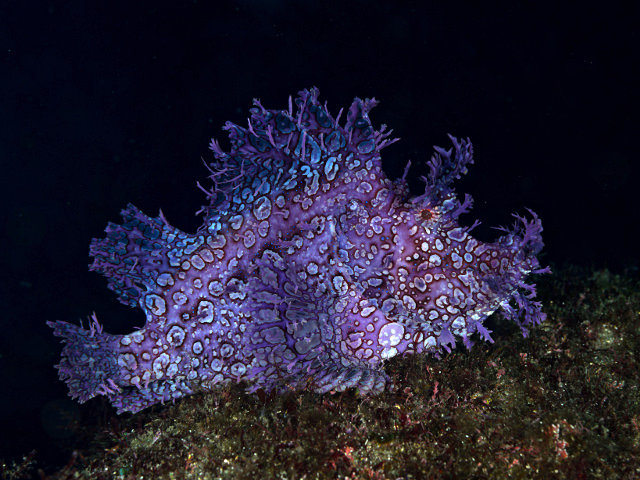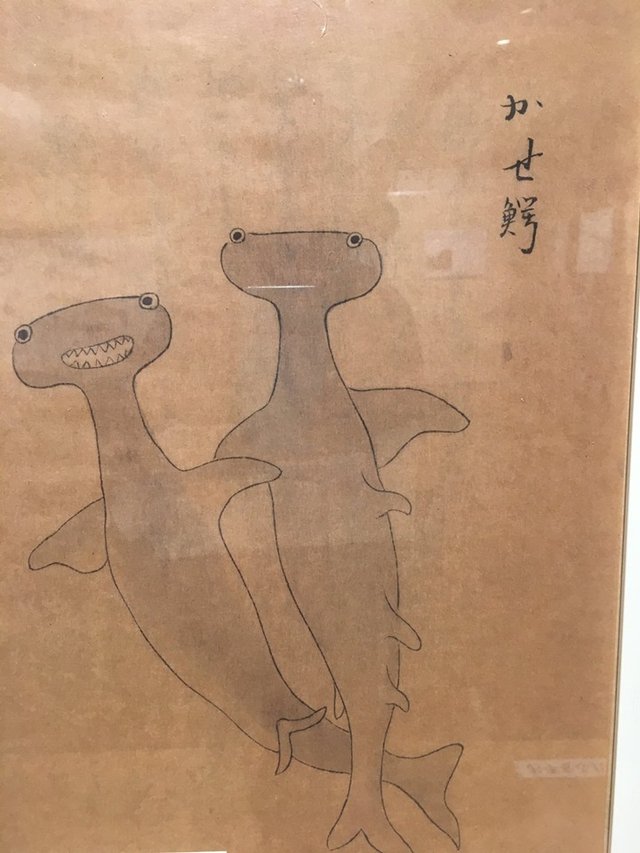Culture
Diving... In Japan?
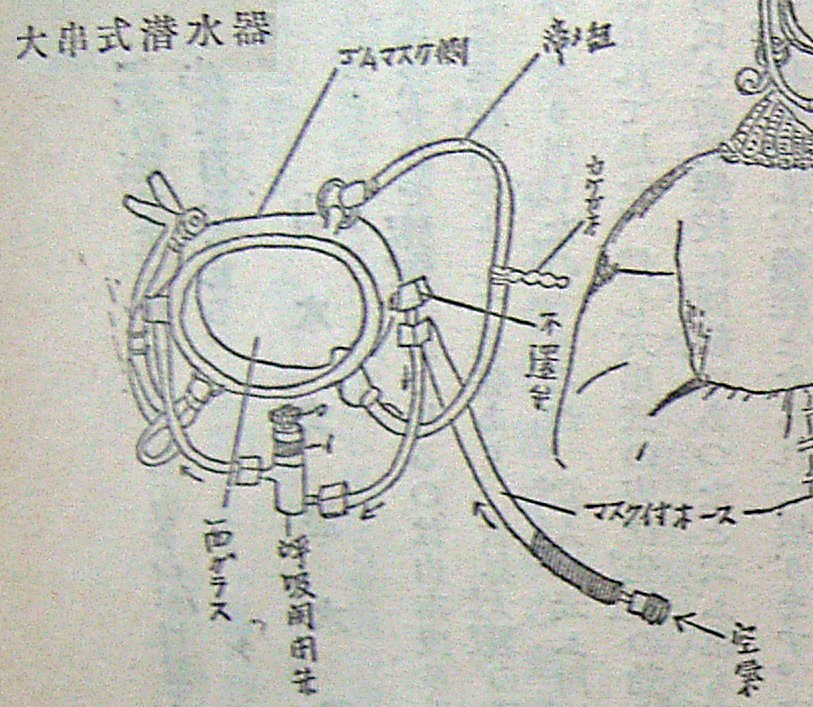
A great diving Nation
Japan’s underwater world, and diving culture, is still relatively unknown outside of its borders.
And yet, a substantial community of committed individuals has been kitting up and diving Japanese waters, be it summer or winter, for many decades nows.
And we are not talking about the Amas, Japan’s professional female free-divers specialised in underwater foraging, or the traditional spearfishing culture of the Ryū-Kyū islands.
Nor are we talking about pioneers Riichi Watanabe, Iwao Ōgushi and Yumihachi’s Kataoka experiments of diving Japanese waters with a custom designed self-contained underwater breathing apparatus they had designed in 1916-1918, roughly at the same time as the Fernez-Le Prieur apparatus first blew their bubbles under water of the Mediterranean Sea, both decades before the Cousteau-Gagnan patent Aqualung…
We’re simply talking about present-day Japanese scuba-divers young and old,,some diving through clubs or university-groups, others through their local dive shops, resorts or using specialised booking agents.
Image source: Nyle Monday works.bepress.com/nyle_monday
Diving abroad, you might have come across groups of Japanese divers, often travelling with a dedicated Japanese-speaking guide, and sometimes in somewhat isolated groups, with their own schedules, shops and even chartered boats in popular diving destinations.
Well, most of these avid divers are also usually engaged in local diving back home.
Scuba-diving is a surprisingly big activity in Japan, where a distinct, thriving and somewhat self-sufficient dive-culture has evolved over the years, in the relative isolation provided by the Japanese language.
A culture with its own codes, specific interests, publications or even equipment brands, that people sometimes catch a puzzled glimpse of when crossing paths with Japanese divers abroad, sporting stylish dive gear, Gull fins and regulators sometimes reading slightly quizzical statements such as “the Legend of the Bism™”…
Image source: noris-okayama.jp
Indeed, as a tourist destination Japan is more famous for its unique culture, fascinating history, world-famous cuisine, lush mountainous nature and unique scenery, and also first-class infrastructure and modernism than for its underwater world.
Most people visiting Japan for a vacation will be looking to explore aspects of its charismatic culture, past and present, to visit major sites, try Japanese food and experience those “only-in-Japan” attractions, that the country has a wealth of.

Miyajima, Hiroshima Prefecture
Some visitors also do visit (sometimes quite regularly) for much more specific reasons, such as winter sports – lured by the world-class quality of Japan’s abundant coverage of powder-snow, hiking or other land-based nature activities – but marine sports-focused visits (notably for scuba-diving, free-diving or snorkelling) are still quite uncommon.
And yet, the seas of the Japanese archipelago certainly do have a lot to offer.
From the warm subtropical waters of the southern archipelagos, to the more temperate waters of Honshū, right up to the subarctic ice diving of Hokkaidō, there is definitely a lot going in Japanese waters.
Highlights include coral reefs, wrecks, remote islands, volcanic topography, caves and lakes, not to mention world-class macro subjects, schooling hammerheads, marine mammals and a remarkable overall biodiversity, linked to the islands’ geographical position, topography, and exposure to key currents…
And, Japan being Japan, diving also has a rather unique atmosphere, in sharp contrast with more standard diving destinations such as South-East Asia, Egypt, Central America and the Caribbean or the islands of the South Pacific.
Dogtooth Tuna, Ogasawara Islands – Image source: blog.livedoor.jp
H. japapigu pygmy seahorse – Image source: novataxa.blogspot.com
This situation is now changing, and fast: information on local diving is increasingly available in other languages than Japanese, structures are now in place to bridge the remaining language/cultural gaps and, more importantly, Japanese operators are open to the idea of welcoming non Japanese-speaking divers and introducing them to the richness of local diving.
The pages of this website aim to take part in this process of opening up and mutual discovery, offering both useful information, but also a slightly more intimate glance of Japanese diving, as seen from the inside by people who have worked as dive-professionals in a Japanese context, with and alongside Japanese divers.
We hope they will be helpful and informative, and maybe make you want to try dipping your fins in Japanese waters to discover their many riches for yourself.

Shore diving in Okinawa – Image source: www.japan-guide.com
Why is Japan not better-known as a diving destination?
Japan’s reputation as a diving destination has been, so far, largely restricted to Japanese divers and foreigners living in Japan.
We believe that the main factors why Japanese diving not that well-known outside of its borders are as follows:
1. The language/cultural barrier
While also being what makes diving in Japan so special, the language and cultural barrier has rendered access to Japanese diving often more difficult than elsewhere.
While no place in Japan is more than 150 km away from the sea, the exception of Japan’s subtropical hotspots like the Ryū-Kyū islands (Okinawa are), diving is simply not as visible as in, say, Southeast Asia’s major diving areas (Indonesia, Thailand, Philippines…), where scuba/snorkelling related tourism activities play a key role in local economies.
In Japan, local diving activities are, for the most part, definitely more discreet, not unlike what is found in European diving regions, for instance.
Until recently, Japanese diving was somewhat closed-off, despite Japan’s large number of active divers, as most local dive-centres were, until recently, almost exclusively focused on their Japanese diver-base, and offering only limited access to non-Japanese speakers (with the exception of Okinawa, which, for practical and historical reasons, always had more English language options).
Like so many other things in Japan, Japanese diving culture has developed in a relatively self-sufficient, language-based isolation (which we’ll discuss in more detail here).
Japanese operators were also, until now, largely under-represented in major diving expos such as Germany’s Boot, France’s Salon de la Plongée, and had a limited presence even in the more local Asian Dive Expos (ADEX), concentrating instead on Japan’s local dive fairs (such as the Marine Diving Fair)
Overall, only limited information on local diving was available in other languages than Japanese.

Image source: ds-ohno.com
Yet this situation is changing, and fast…
A growing network of dive centres caters almost exclusively to non-Japanese-speaking divers, either locally (Okinawa) or acting as agents organising dive trips across the country.
These operators have been around for a while, focusing moslty on so-called “expat” communities of foreign residents, but are increasingly catering to short-term visitors and curious dive-tourists.
And beyond these somewhat specialised operations, Japanese dive-centres themselves are opening up, notably thanks to the fantastic work of the NPO Japan Diving Experience, which is actively engaged in bridging the infamous communication gap between non Japanese-speaking divers and Japanese dive shops, and helping everyone, gain access to the richness of Japanese diving.
English language information is also more readily available, with the Japan National Tourism Organisation leading the way with a great informational and multilingual JNTO website on diving in Japan.
Definitely worth a mention are Tim Rock and Noriyuki Otani’s 2019 publication on their 50 Best Dives in Japan’s, or sites like major diving publication Marine Diving’s English-language pages and SSI’s Japanese dive site information / logbook pages.
Let’s not forget personal blogs, like French diver Florine Quirion’s dive and travel World Adventure Divers blog, or, the Bonnie Waycot’s unmissable (yet no longer updated) Rising Bubbles, thoroughly documenting her diving across the archipelago – which are all great sources of English-language information on Japanese diving. (See our full list of recommended resources here.)
2. Japan’s many other strengths as a tourism destination

Tōkyō
We believe the other major factor that played against Japanese diving is… Japan itself, and the country’s fascinating culture.
With so much to see and experience, most visitors concentrate primarily on the richness of Japan’s land-based culture and activities.
Japan may be an island-nation, but it is also a forest-covered, mountainous country, and many visitors do not even so much as see the ocean during their visits!
And even for keen divers, underwater activities might not be visitor’s first priority in a destination with already so much to offer on dry land.
Yet while it is true that it might be difficult (but certainly not impossible) to squeeze in a few dives in a typical Tōkyō/Kyōto/Nara based first trip to Japan itinerary, we are convinced that getting a taste of Japanese diving might make a good reason to return, and visit other, slightly more remote areas of the country for instance, that diving activities can be a great gateway to.
And let’s not forget more “local” tourism from neighbouring Asian countries, from which visitors can easily combine short diving getaways with some of Japan’s more traditional tourism highlights.
Historically, when it came to foreign divers, Japanese diving has been somewhat focused on North-American visitors, mostly due to Japan’s historical and economic ties with the USA and a strong NAUI (since 1970), then PADI presence (since 1979), along with other practicalities such as the number of US tourists visiting Japan, ease of trans-Pacific flights, and also the presence US military bases in diving hotspot Okinawa.
And yet, if we look at the current profile and country of origin of international divers visiting other Asian destinations for their diving-related activities, the majority of divers now come from neighbouring Asian countries (Taiwan, Singapore, Korea, Hong-Kong and to a certain extend Thailand and Malaysia) where a relatively young diving population is increasingly traveling locally for diving, and also from European countries (Germany, Switzerland, France, UK, Spain and Italy), an older diving population but with longer usually holidays than their North-American peers, allowing for easier, more frequent long-distance travel.
We’re quite confident that diving in Japan, while it will never equal the specific appeal of purely tropical destinations, will find its place in the numerous options Japanese tourism has to offers visitors.
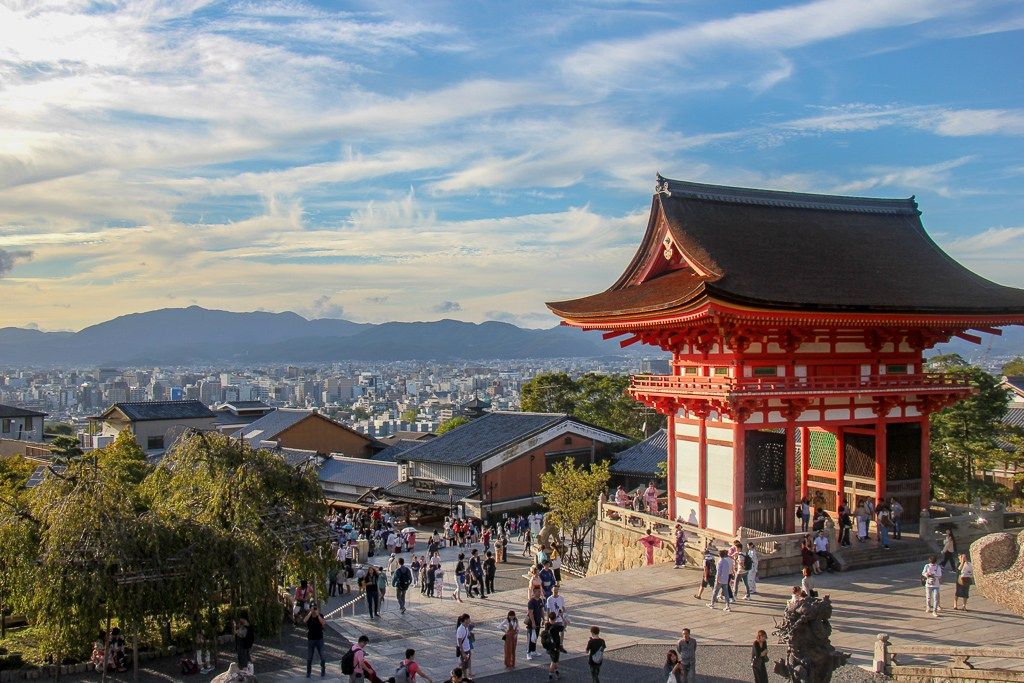
Kyōto – Image source: pinterest.com
3. The country’s size
Another aspect that might be playing against Japanese diving is the size and layout of the country – while well connected, Japan remains a relatively large place and some of its best diving is spread out, and often in slightly more distant areas, remote islands, or less accessible parts of the country, isolated by mountains or water (this is highly relative, given the quality of Japan’s transport infrastructure).
While most diving areas are relatively easy to access, it might indeed be difficult to reach certain specific places: transport to more isolated rural areas might be by car or bus only, or using slow local train as opposed to speed and ease of a Shinkansen bullet-train — all this does take a little more planning, which is sometimes complicated by having less English-language information available as soon as you’re stepping off the beaten track.
And sometimes time is the real issue, especially for very remote islands (離島 Ritō more on these fascinating islands here) – the classic, extreme example being the Ogasawara/Bonin Islands, only accessible through a 25-hour ferry ride, leaving weekly from Tōkyō…
All in all, the size of Japan and the remoteness of certain diving areas can make planning diving activities on a short trip a little complicated in some areas, especially if the trip is not 100% dedicated to diving.
And yet, given the quality of Japan’s infrastructure, this shouldn’t be much of a deterrent for seasoned divers who often brave 24h+ of transit to places like Sorong in West Papua to dive Indonesia’s Raja Ampat for a week for instance…
Furthermore, beyond the simple reward of actually getting to dive more isolated places, being a little adventurous is, as elsewhere, often highly rewarding, and usually offers the best diving around…
It’s definitely wirth the effort, especially in a safe place and tourist-friendly place like Japan, as more remote areas can offer visitors experiences difficult to have elsewhere.
Source: tokyobling.com
Projection of Japan, with the Nansei and Nanpō archipelagos, on a scaled map of western Europe
4. Seasonality and nature

Nikkō, Tochigi Prefecture
Japan is not in the tropics – it is a temperate country, with strong seasonal contrasts.
The country is also spread out over a large area, with Japanese climatic conditions ranging from the subarctic to the subtropical…
This means water can be cold, and even very cold in some places.
While people do dive all year round in Japan, especially for local dry-suit divers, there is a strong seasonality to the activity, which short-term visitors need to take into account.
Outsider southern, subtropical areas, in many months of the year, Japan’s diving is cold to temperate diving.
There is also a short but intense rainy season in the late spring and, in the summer months, regular cyclonic storms (typhoons) sweep across some of the archipelago’s most popular diving areas, which can disrupt a traveller’s plans, and diving activities, for a few days.
And let’s not forget Japan’s location on the corner of major tectonic plates, which gives the country its high seismic and volcanic activity.
Yet this is quite similar to popular dive destinations countries in Asia located on the
“Ring of Fire” (South-East Asia’s Philippines or the Indonesian Archipelago, for instance…) – but with a major difference, since Japan has some of the best infrastructure and disaster response in the world…
Southern subtropical areas like the Nanpō or Nansei Islands (Okinawa) do offer warm temperatures and good diving conditions pretty much all year around, except when there is a typhoon, or a storm in winter.

Volcanic ash collection in Kagoshima, Kyūshū
And let’s not forget that seasonal colder-water, and fluctuation of Japan’s main warm current, the Kuroshio, brings out some great seasonal highlights, such as whale migrations, which might be in themselves a good reason to brave the cold (onsen hot-springs are never far in Japan, and great place to relax and forget the cold – just remember to let your body get rid of some of that excess diving-nitrogen before soaking up!).
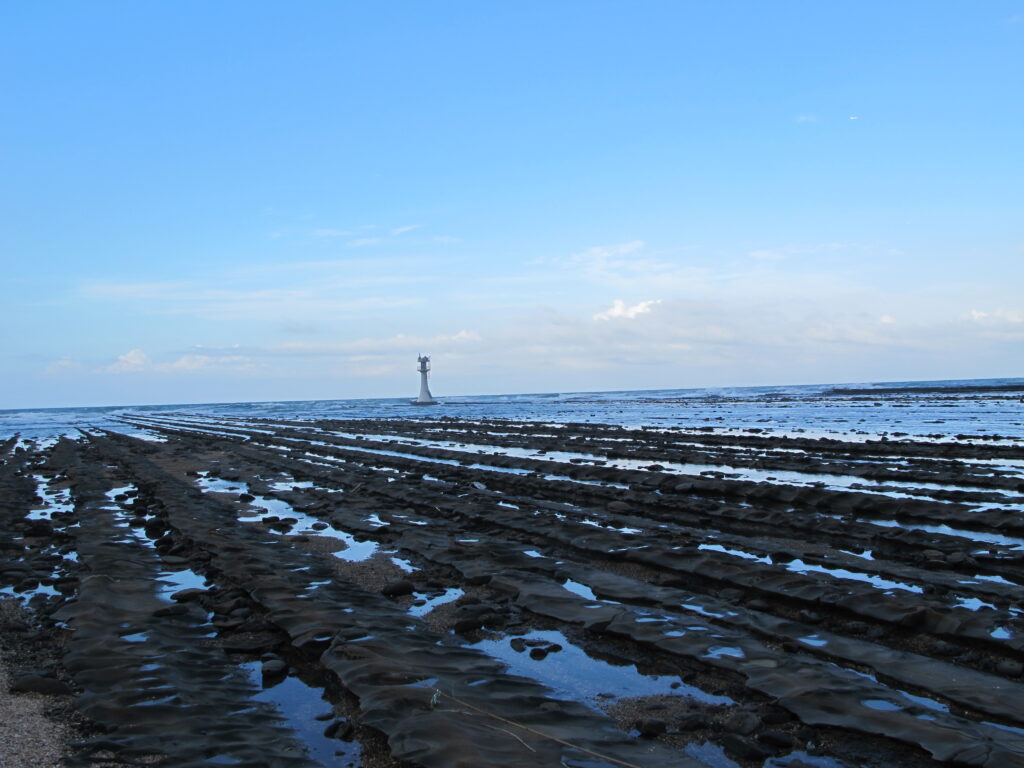
Devil’s Washboard shoreline, Miyazaki Prefecture, Kyūshū
5. Price
Let’s face it; diving in Japan is not particularly cheap – well at least not rock-bottom cheap as you’d find in certain locations, especially in South-East Asia or the Caribbean.
That said, it is not extraordinarily expensive either, and you’ll find that fun diving prices are now, in most cases, roughly on par with many other locations across the world.

A 2-tank boat will usually be around 130 euro / 160 USD – which is indeed on the high-side, but not incredibly expensive, actually cheaper than some places we’ve worked at in Indonesia’s Komodo National Park, Mexico’s Sea of Cortez or Thailand’s Andaman sea.
Sure, in some place you might be able to get 3-tanks for that price, but conditions on boats and dive-centre facilities, and service, are often superior than what you would find elsewhere, and if nitrox is available, it is often free of charge for certified divers.
Some areas do charge a lot for shore diving (up to 30 euro/40 USD per tank), but this includes use of dive centre facilities, which again are usually quite superior to what you would find elsewhere, and a dive guide, since plain tank rental is not commonly offered to visiting divers.
Most dive centres and local resorts offer interesting packages including
diving, transportation and accommodation options.
Courses and imported equipment (imported brands are sometimes almost 50% more expensive than Europe or the USA…) are, however, on the high side in most cases.
As an important side-note, especially for readers coming from a strong tipping culture, please remember that there is virtually no tipping in Japan – at least not in a standard commercial service setting. If you want to give something, give little gifts, especially food and drink.
Some form of tipping does exist, but it is restricted to specific, traditionally defined contexts and highly formalised, so of absolutely no concern to tourists and visitors.
Overall, Japan’s tourism industry is still weighed down by the image of Japan as an extremely expensive destination, which goes back to the bubbly 1980s…
However, times have changed, and while it is certainly possible to consider Japan as a higher budget destination, it is also quite possible to visit, and dive Japan on a middle-range budget.
In our experience, the most expensive aspect of travelling in Japan is not so much food or accommodation, but rather transport.
Yet non-resident travellers have the option of applying for an unlimited JR Railpass before entering Japan, which is a game changer.
For more remote areas such as the Nansei islands, non-residents can get discounts on domestic airfares through dedicated airpasses. such as the ANA Experience Pass or the JAL Explorer Pass.
And LLC / low-cost air carriers operating in Japan are also a good, although really not ecologically ideal, way of reducing transport costs.
See more on money issues in our Practicalities section here.
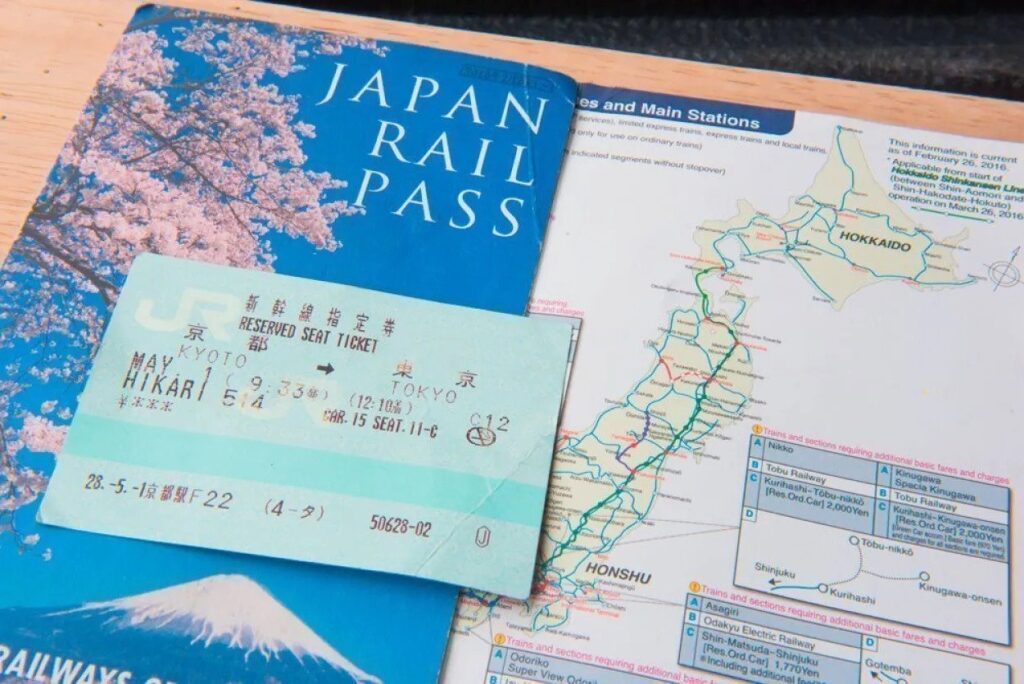
JR Japan Railpass – Image source: civitatis.com
6. Type of diving and positioning
In the mid-2010s, the Japanese government invested a lot of energy in promoting foreign tourism in Japan, which turned out to be a very successful endeavour, especially from 2014 onwards.
On the diving front, a lot of these efforts were aimed at promoting the islands of Okinawa, with introductory level diving and resort-based package-tourism.
However, the sudden influx of tourists put a lot of stress on the ecological and human environments of theses islands, and this brute-force strategy is now being reconsidered under a more inclusive and sustainable angle.
As far as diving is concerned, the Ryū-Kyū / Okinawa islands do offer great warm-subtropical conditions almost all year round, with coral reefs and manta rays – yet these conditions are quite similar to those of South-East Asian countries, with which is difficult to compete on many other levels, including price.
This situation has now changed, and beyond the Ryū-Kyū, the Japanese archipelago as a whole, with its unique contrasts and amazing diversity, is promoted as a solid diving destination.

Fish feeding on a try-dive – Image source: activityjapan.com
While tropical-style diving might be limited to the southern islands of Okinawa, if we look at the archipelago as a whole, Japan does truly have a lot to offer to more adventurous divers, including larger marine life and highlights such as:
Manta rays, hammerhead sharks, turtles, dolphins and even whales in season, but also sites with great blue water visibility, fascinating volcanic topography and a few specialist activities such as chummed shark dives, ice diving, black-water diving, WW2 wrecks, caves and lakes, or the mysterious structures of the Yonaguni underwater monument…

Yonaguni “Monument”, Okinawa Pref. – Image source: worldkings.org
However, the fact that a number of Japan’s diving highlights are often in more temperate waters, and often with highlights appealing to more advanced diving populations rather than occasional “tropical” divers does, to a certain point, restrict the country’s appeal as a general, entry-level diving destination.
Another aspect to keep in mind is that quite a few places, especially on the main islands of Japan, diving means primarily guided shore diving, boat diving being the exception rather than the rule.
This is partly due to local conditions, but also quite often to the country’s fishing industry – Japan, as an island nation, has always had very active fisheries, and most coastal towns are traditional fishing areas.
This means that diving operations often have to operate within a framework clearly designed to avoid disturbing local fishermen and fishing activities.
This complex reality does tend to restrict boat diving possibilities to some extent, as access to offshore sites with rich marine life will often be restricted to professional fishing activities.
Japanese shore diving is often focused on macro critters (diving to spot and photograph/film smaller, often rare creatures) and/or endemic local species (of which Japanese divers are very fond – this is one of the defining traits of Japanese diving culture), highlights which, for practical reasons, generally appeal to more experienced divers.
There are exceptions, of course, including incredible pelagic action, and even schooling hammerheads seen on shore dives on more remote islands of the Nanpō archipelagos, but most of the time, shore diving subjects will indeed be quite small and specialised.
Though this is not very well know yet, the macro diving Japan has to offer is amazing, truly world-class.
Japanese waters, with their seasonal blend of hot and warm currents and deep water access, offer divers the chance to see rare, exquisite macro diving subjects rarely seen elsewhere than the major macro diving areas of the world (such as Dauin in the Philippines or Lembeh in Indonesia), including rare pigmy seahorses, pipefish, rhinopias, frogfish and nudibranchs, which are, along with endemic gobies and blennies.
Divers also often come across rare deep-water creatures brought up by frequent coastal upwellings…
Rhinopias frondosa, Osezaki, Shizuoka Prefecture – Image source: izuzuki.com
Yet this is a slightly specialised type of diving, involving colder water in Japan than in South-East Asian countries (the best macro diving is accepted to be in the temperate waters of Honshū), and is therefore more appealing to experienced divers, photographers and videographers, who in turn often will prefer heading further south to the Coral Triangle for actual tropical diving…
Beyond local highlights, Japan’s underwater strengths lie in its contrasts and diversity, and also in unique environments such as the those found in northern Nansei islands or the Nanpō archipelago.
In conclusion
Out of these 6 factors, we’re firmly convinced the language/culture barrier is probably still the biggest obstacle, but also one that is clearly in the process of being overcome.
Surely, some dive centres might still have something of a local-club feel, and to put it simply, not really interested in welcoming non-Japanese-speaking divers, but this is no longer the majority.
Japan is changing in many ways, and definitely opening up to different types of tourism.
Another positive aspect is that local communities, after some challenging experiences with mass-tourism a few years back (2014 onwards), are now increasingly focused on developing sustainable tourism activities, in which eco-tourism and nature-based activities such as hiking or responsible scuba diving will no doubt play a major role.
Edo Period artist’s rendition of hammerhead sharks – Image source: dl.ndl.go.jp




